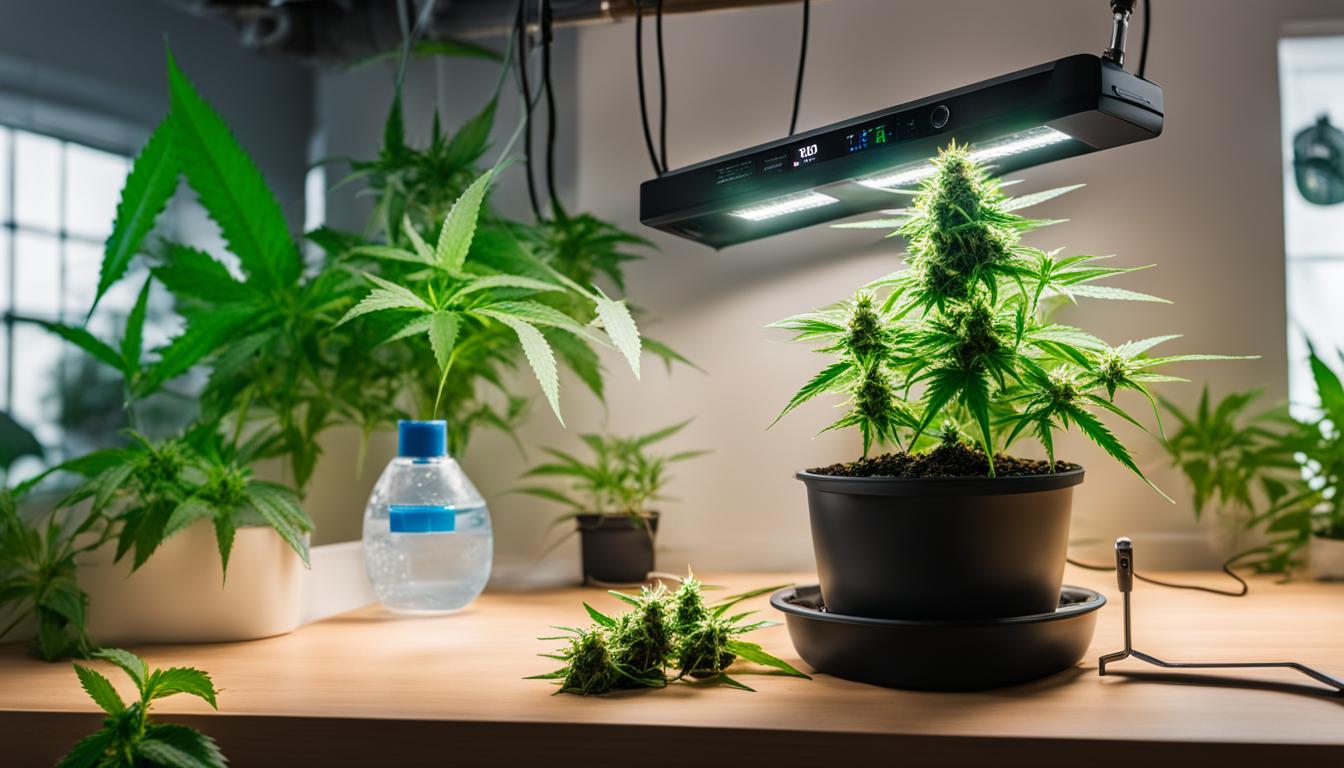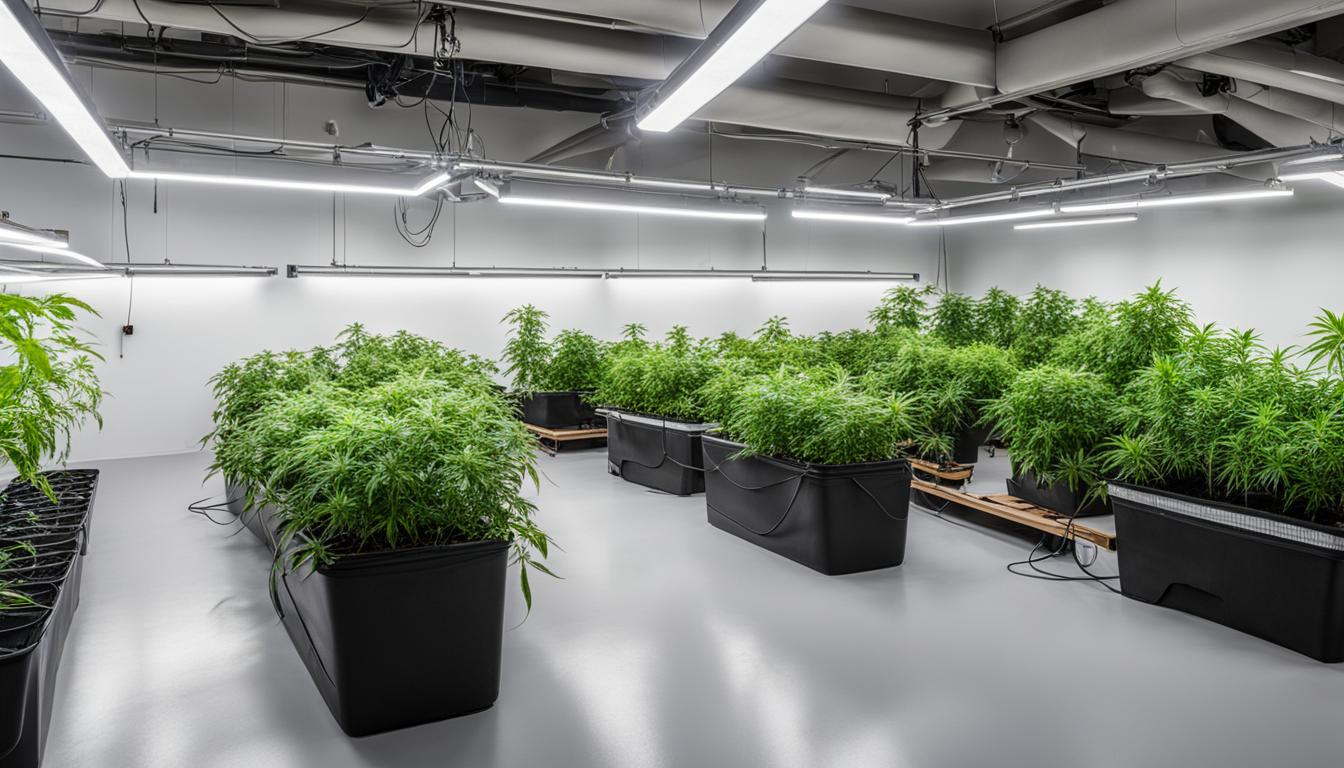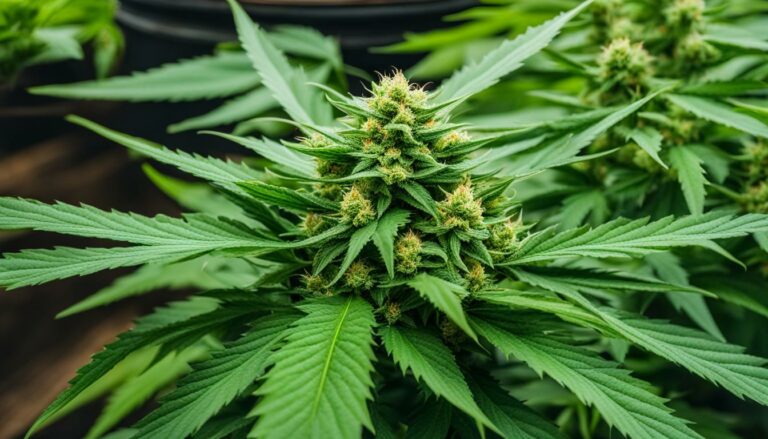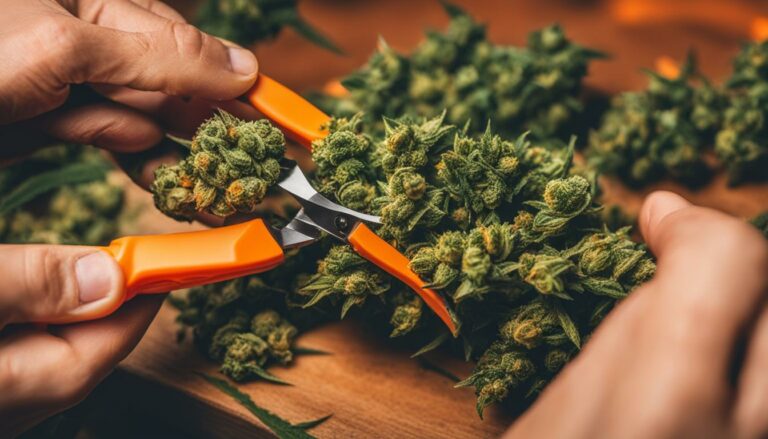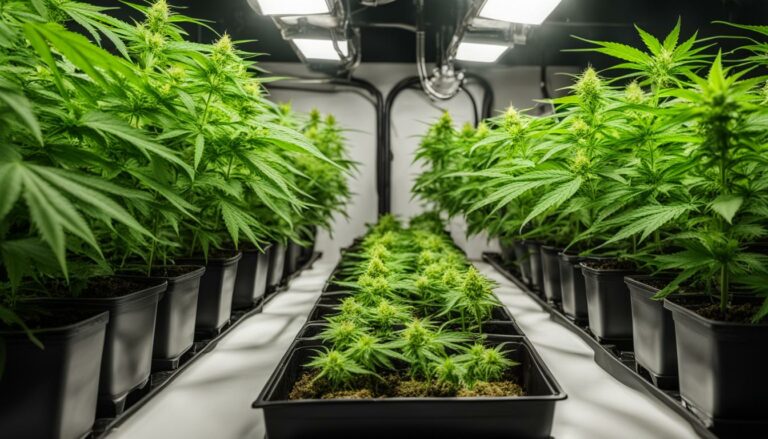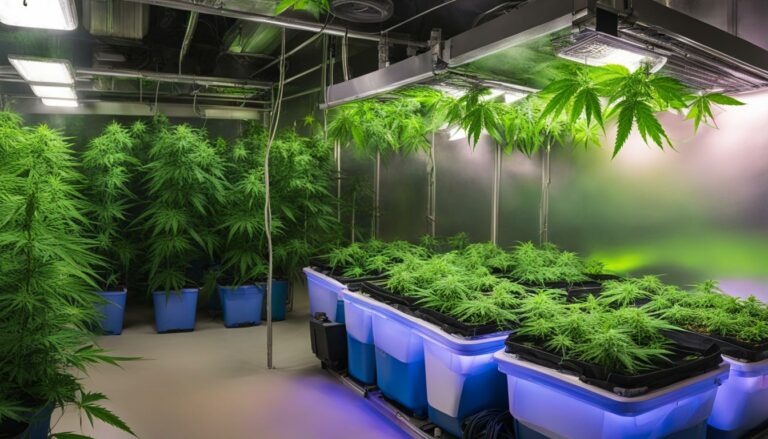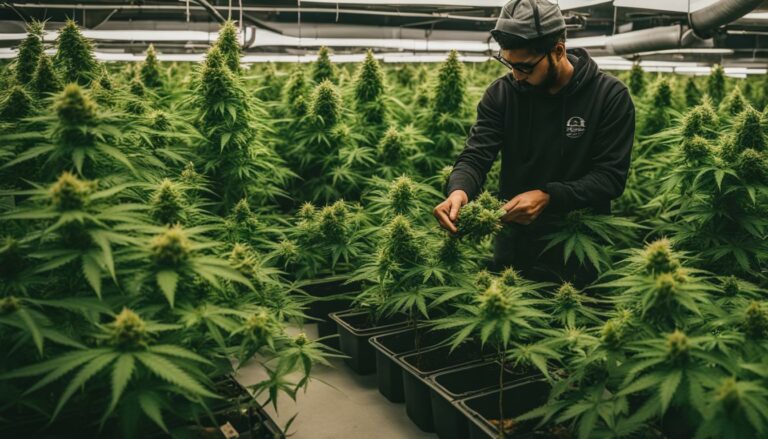Cannabis Plant Diseases and How to Prevent Them
Are your cannabis plants falling victim to diseases, hindering their growth and reducing their yield? Don’t fret, because we have the solution for you! In this comprehensive guide, we will explore the world of cannabis plant diseases and provide you with valuable insights on how to prevent and treat them effectively. With our expert tips and practical advice, you can ensure the optimal health and productivity of your cannabis plants.
Preventing cannabis plant diseases is crucial to maintain the robustness and potency of your crop. By implementing proper disease management strategies and utilizing disease-resistant cultivars, you can protect your plants from common threats such as Fusarium, Pythium, Powdery Mildew, Botrytis, and Hop Latent Viroid (HLVd). Take control of your cultivation journey and let us guide you towards a thriving harvest. Let’s dive in!
Maintaining a Clean and Sanitary Environment
Creating and maintaining a clean and sanitary environment is of utmost importance when it comes to preventing the spread of pathogens in cannabis plants. Contaminated equipment, tools, and even the presence of staff and visitors can contribute to the dissemination of diseases, leading to compromised plant health and reduced yields. To ensure a healthy crop, it is essential to implement stringent cleaning and sanitization protocols throughout the growing facilities.
Regular cleaning and sanitization of equipment, tools, and growing areas help minimize the potential spread of pathogens. This includes the thorough cleaning of trimming rooms, dehumidifiers, air filters, and any other surfaces that come into contact with the plants. Additionally, implementing proper hygiene protocols for staff and visitors, such as using footbaths, requiring the use of hairnets, beard nets, gloves, and Tyvek coveralls, can further reduce the risk of contamination.
Air filtration and purification systems play a crucial role in maintaining a clean environment. Installing high-efficiency particulate air (HEPA) filters and utilizing ultraviolet (UV) light technology can effectively reduce airborne contaminants and pathogens. These systems help ensure the air quality inside the growing facilities remains optimal, minimizing the risk of disease transmission.
| Benefits of Maintaining a Clean and Sanitary Environment |
|---|
| Prevents the spread of pathogens |
| Reduces the risk of disease outbreaks |
| Improves plant health and overall crop yield |
By prioritizing cleanliness and implementing effective sanitization practices, cannabis cultivators can prevent the spread of pathogens, safeguard their plants against diseases, and ensure a successful harvest.
Quote:
“A clean and sanitary environment is the foundation for healthy cannabis plants. By implementing proper cleaning protocols, utilizing air filtration systems, and practicing good hygiene, cultivators can prevent the spread of pathogens and maintain a healthy crop.” – Dr. Jane Anderson, Plant Pathologist
Maintaining Appropriate Humidity and Air Temperature
In order to control and prevent the spread of powdery mildew and botrytis in cannabis plants, it is crucial to maintain appropriate humidity and air temperature levels, especially in the flowering room. These two factors play a significant role in creating an environment that is unfavorable for the growth and proliferation of these pathogens. By monitoring and controlling humidity and air temperature, cultivators can effectively prevent infections and safeguard their crops.
The Impact of Humidity
High humidity levels create a favorable environment for powdery mildew and botrytis to thrive. These pathogens require moisture to reproduce and spread. By maintaining humidity levels between 40% and 60%, cannabis cultivators can create a less favorable environment for these diseases. Regular monitoring of humidity levels, especially during the flowering stage, is crucial to prevent the onset of infections.
The Role of Air Temperature
Air temperature also plays a vital role in controlling powdery mildew and botrytis. Both diseases thrive in warm temperatures, and lowering the temperature can inhibit their growth. It is recommended to keep the temperature below 24°C (75°F) during the flowering stage to minimize the risk of infections. Air circulation and ventilation systems are essential to ensure an even distribution of temperature throughout the growing area.
| Humidity Levels (%) | Temperature (°C) | Prevention |
|---|---|---|
| 40-60% | Below 24°C (75°F) | Optimal conditions to prevent powdery mildew and botrytis infections |
By maintaining appropriate humidity and air temperature levels, cannabis cultivators can effectively control the spread of powdery mildew and botrytis. These preventive measures, along with regular monitoring and early detection of diseases, are crucial for the overall health and productivity of cannabis plants. Implementing these strategies in the flowering room can help ensure a successful harvest and minimize yield losses due to disease infections.
Treating Irrigation Water to Prevent Pythium and Fusarium Infections
Properly treating irrigation water is a crucial step in preventing the spread of harmful pathogens like Pythium and Fusarium in cannabis plants. These fungi can cause devastating diseases such as root rot, damping-off, and crown rot, leading to stunted growth and reduced yield. Implementing effective treatment methods can significantly reduce the risk of infections and ensure the health and productivity of your cannabis crops.
UV Treatment
One method for treating irrigation water is UV treatment. UV light can be used to kill or deactivate pathogens present in the water, including Pythium and Fusarium spores. UV treatment is particularly effective in destroying the DNA of these organisms, preventing them from reproducing and causing infections in your plants. UV treatment is a non-chemical approach and does not introduce any harmful residues to your crops, making it an environmentally friendly choice.
Chlorine Treatment
Another common method for treating irrigation water is chlorine treatment. Chlorine is a powerful disinfectant that can effectively kill a wide range of pathogens, including Pythium and Fusarium. However, it is important to use chlorine in the correct dosage to avoid damaging the plants or causing phytotoxicity. It is recommended to regularly monitor the chlorine levels in the water to ensure they are within the optimal range for disinfection.
Registered Products
There are also registered products available in the market specifically designed for treating irrigation water in cannabis cultivation. These products are formulated to target and eliminate pathogens like Pythium and Fusarium, providing an additional layer of protection against infections. When using registered products, it is crucial to carefully follow the manufacturer’s instructions for proper dosage and application to ensure maximum effectiveness.
| Treatment Method | Advantages | Disadvantages |
|---|---|---|
| UV Treatment | Environmentally friendly, no chemical residues | Requires proper equipment and maintenance |
| Chlorine Treatment | Effective against a wide range of pathogens | Potential phytotoxicity if not used correctly |
| Registered Products | Formulated specifically for cannabis cultivation | Dependent on proper dosage and application |
Identifying and Removing Diseased Plants
One of the most crucial steps in preventing the spread of diseases in cannabis plants is the identification and removal of diseased plants. By promptly identifying and removing infected plants, cultivators can prevent the buildup of inoculum and minimize the risk of disease spread throughout the facility.
For effective identification, DNA-based testing tools can be used to screen plants for pathogens. Techniques such as the PathoSEEK detection assays provide accurate results, allowing cultivators to detect infections even before visual symptoms appear or confirm suspicions of disease. Early detection enables proactive measures to be taken swiftly, reducing the impact on the overall crop.
Once diseased plants are identified, it is crucial to remove them from the growing environment immediately. Complete eradication is essential to prevent the disease from spreading further and infecting neighboring healthy plants. By eliminating diseased plants promptly, cultivators can ensure a healthier and more productive crop.
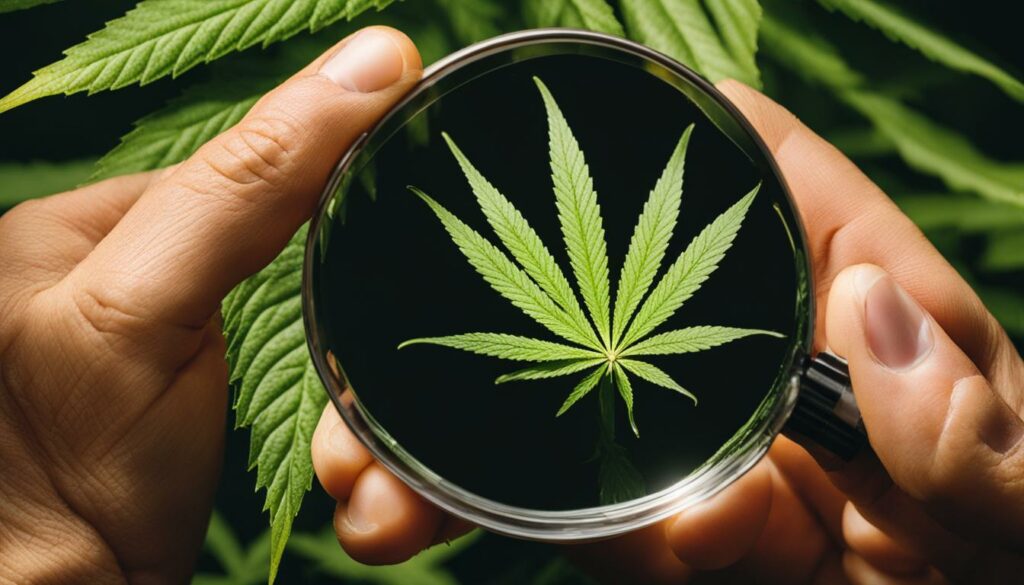
Table: Steps for Identifying and Removing Diseased Plants
| Steps | Description |
|---|---|
| 1 | Utilize DNA-based testing tools, such as PathoSEEK detection assays |
| 2 | Screen plants for pathogens before visual symptoms appear |
| 3 | Swiftly remove identified diseased plants from the growing environment |
| 4 | Ensure complete eradication of diseased plants to prevent further spread |
By prioritizing the identification and removal of diseased plants, cultivators can effectively control and manage diseases in their cannabis crops. Implementing regular screening protocols and utilizing advanced DNA-based testing tools help ensure early detection and swift action, reducing the risk of disease spread and maintaining a healthy growing environment.
Disease-Resistant Cannabis Cultivars: Harnessing the Power of Genomic Data Analysis
Cannabis cultivators face numerous challenges in protecting their plants from diseases, with powdery mildew being one of the most prevalent and damaging. However, recent advancements in genomic data analysis have opened up new possibilities for breeding disease-resistant cannabis cultivars. By analyzing the genetic sequences of different cannabis cultivars, researchers can identify specific genes associated with powdery mildew resistance.
This valuable insight allows breeders and cultivators to select and cross-breed plants with the desired disease resistance traits, ultimately developing new cultivars that are less susceptible to powdery mildew. Genomic data analysis provides a scientific foundation for targeted breeding programs, ensuring that cannabis cultivators have access to robust, disease-resistant genetics.
Through careful selection and breeding, disease-resistant cannabis cultivars can greatly reduce the risk of powdery mildew infections and improve overall plant health. These cultivars offer a proactive solution to disease prevention, allowing cultivators to focus on enhancing yield, potency, and quality without being hindered by disease outbreaks.
Benefits of Disease-Resistant Cultivars
The use of disease-resistant cannabis cultivars offers several key benefits for cultivators:
- Reduced reliance on chemical interventions: Disease-resistant cultivars can help reduce the need for chemical-based disease control measures, allowing cultivators to adopt more sustainable and environmentally friendly practices.
- Improved crop resilience: Disease-resistant cultivars provide an added layer of protection against powdery mildew and other diseases, ensuring that crops are more resilient and better able to withstand environmental stressors.
- Enhanced yield and quality: By minimizing the impact of diseases, disease-resistant cultivars can contribute to higher yields and improved quality, resulting in more profitable harvests for cultivators.
- Consistent and reliable performance: Disease-resistant cultivars exhibit consistent resistance to powdery mildew across different growing environments, providing cultivators with a reliable tool to mitigate disease risks.
By harnessing the power of genomic data analysis and breeding for disease resistance, cultivators can cultivate a healthier and more resilient cannabis crop, ensuring successful harvests and long-term sustainability.
| Key Takeaways |
|---|
| Genomic data analysis enables the identification of genes associated with powdery mildew resistance in cannabis cultivars. |
| Breeding disease-resistant cultivars reduces the risk of powdery mildew infections and improves overall plant health. |
| Disease-resistant cultivars offer benefits such as reduced reliance on chemical interventions, improved crop resilience, enhanced yield and quality, and consistent performance. |
Using Disease-Free Planting Stock or Cuttings
Ensuring that cannabis plants are free from diseases starts with using disease-free planting stock or cuttings. By screening incoming plants and implementing quarantine and inspection protocols, cultivators can prevent the introduction of diseases into their growing facilities. Specialized DNA-based testing tools, such as PathoSEEK detection assays, can be used to screen plants for pathogens, helping identify potential infections before they become visually evident. This proactive approach can significantly reduce the risk of disease outbreaks and protect the overall health of cannabis crops.
Quarantining and inspecting incoming plants for disease symptoms and the presence of insect pests is a crucial step in maintaining a disease-free environment. By implementing strict quarantine measures, cultivators can prevent the introduction of pathogens that could devastate their crops. Additionally, regular inspections can help identify any potential infections in the early stages, allowing for immediate action and the removal of diseased plants to prevent further spread.
Using PathoSEEK detection assays as part of screening incoming plants provides cultivators with a powerful tool for disease management. This DNA-based testing method can detect the presence of pathogens even before visible symptoms appear, allowing for early intervention and preventing the spread of diseases throughout the entire cultivation facility. By relying on advanced testing techniques, cultivators can ensure that their planting stock is disease-free and mitigate the risk of outbreaks that could result in significant crop losses.
| Benefits of Using Disease-Free Planting Stock or Cuttings: |
|---|
| 1. Significant reduction in the risk of disease outbreaks |
| 2. Prevention of the introduction of pathogens into the cultivation facility |
| 3. Early detection and removal of diseased plants, minimizing disease spread |
| 4. Protection of overall crop health and yield |
By prioritizing the use of disease-free planting stock or cuttings and implementing robust screening processes, cultivators can establish a strong foundation for disease prevention. This proactive approach not only safeguards the health and productivity of cannabis crops but also ensures the longevity and sustainability of the cultivation operation as a whole.
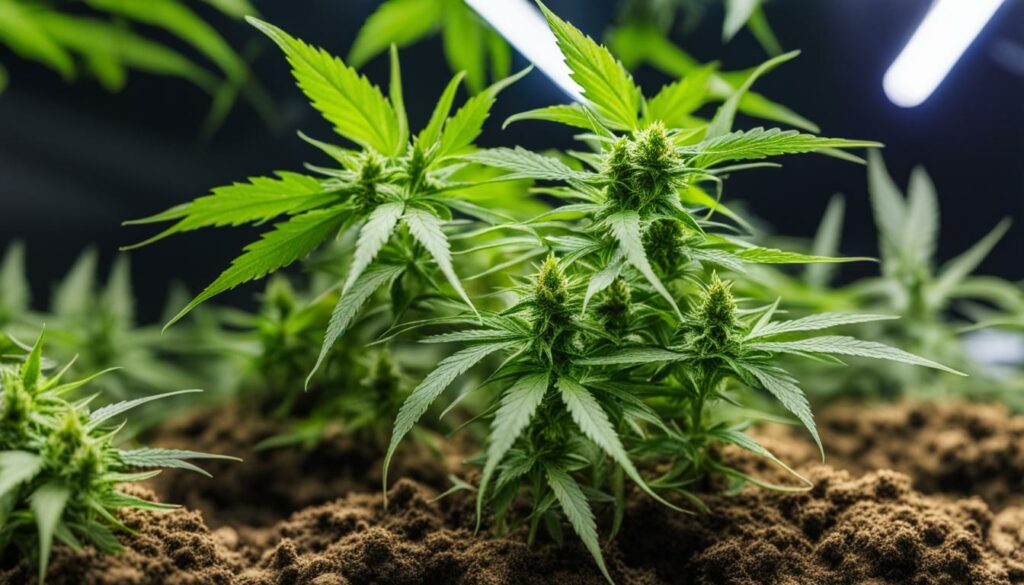
Quote:
“Using disease-free planting stock is a crucial step in preventing the introduction of pathogens into the growing facility. By implementing thorough quarantine and inspection protocols, cultivators can protect their crops and minimize the risk of disease outbreaks.” – Cannabis Cultivation Expert
Cannabis Diseases and Pathogens
Cannabis plants are susceptible to various diseases caused by pathogens like fungi, bacteria, viruses, and viroids. These diseases can have detrimental effects on plant growth, yield, and overall health. It is crucial for cultivators to be familiar with the symptoms and characteristics of these diseases to effectively prevent and manage them.
Types of Pathogens
Fungal pathogens such as powdery mildew, leaf spot, and bud/flower molds are common in cannabis plants. Bacterial pathogens can cause diseases like stem canker, root rot, and crown rot. Viruses and viroids can also infect cannabis plants, leading to stunted growth, discoloration, and distorted leaves. It is important to note that different pathogens can cause similar symptoms, making accurate identification essential for effective disease management.
Symptoms of Cannabis Diseases
The symptoms of cannabis diseases vary depending on the pathogen involved. Common symptoms include leaf discoloration, spotting, wilting, mold growth, browning or yellowing of leaves, and stunted growth. Additionally, some diseases may cause lesions, cankers, or rotting of stems, roots, or buds. The presence of these symptoms should prompt immediate action to prevent the spread of the disease and minimize its impact on the plants.
| Pathogen | Symptoms |
|---|---|
| Fungi (e.g., powdery mildew) | White powdery coating on leaves, stems, and buds |
| Bacteria (e.g., stem canker) | Lesions and cankers on stems |
| Viruses | Leaf discoloration, mosaic patterns, distorted growth |
“Identifying and understanding the symptoms of cannabis diseases is crucial for timely intervention and proper disease management.” – Dr. Jane Green
By being proactive in monitoring, identifying, and managing cannabis diseases, cultivators can protect their plants and optimize their yields. Implementing preventive measures, practicing good sanitation, and promptly removing infected plants are fundamental steps in disease management. Regular inspection and early detection are key to minimizing the spread of diseases and ensuring the health and productivity of cannabis crops.
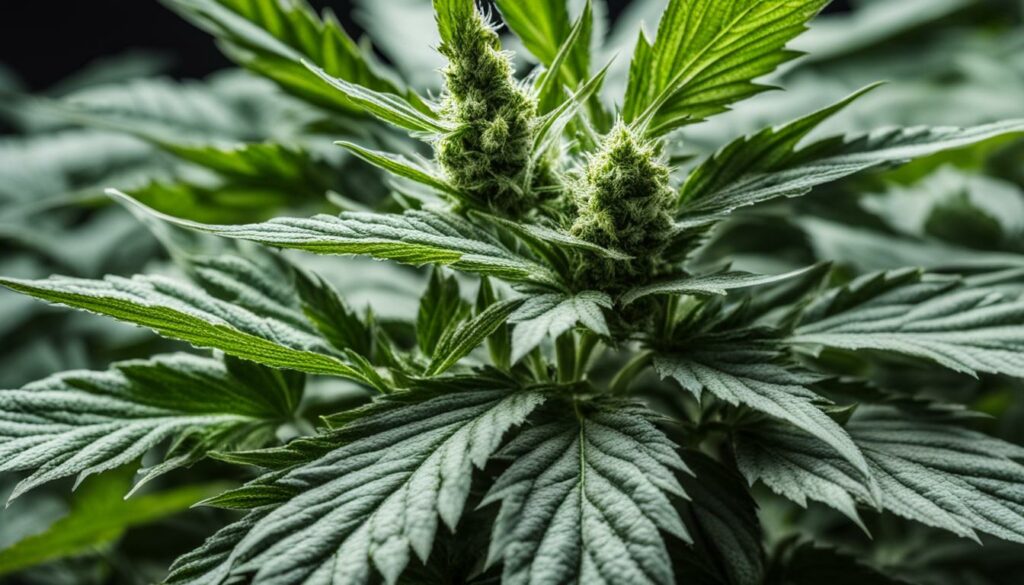
Pathogen Identification Methods
Accurate identification of pathogens is crucial for effective disease management in cannabis plants. Various methods can be used to identify the specific pathogens causing diseases. These methods include assessing morphological characteristics, utilizing molecular methods such as polymerase chain reaction (PCR), and employing next-generation sequencing (NGS) techniques.
“Pathogen identification plays a vital role in understanding the nature of diseases and implementing targeted control measures,” says Dr. James Peterson, a leading plant pathologist. “It allows cultivators to take proactive steps in preventing the spread of pathogens and minimizing crop losses.”
Assessing Morphological Characteristics
One common method for pathogen identification is analyzing the morphological characteristics of the pathogens. This involves examining the physical appearance of the pathogen, such as the shape, color, and size of its structures. By comparing these characteristics to known pathogen profiles, cultivators and pathologists can make preliminary identifications.
However, relying solely on morphological characteristics may not provide definitive identifications, as some pathogens can exhibit similar physical traits. Therefore, additional methods, such as molecular techniques, are often necessary.
Molecular Methods: PCR and NGS
Molecular methods have revolutionized pathogen identification in recent years. Polymerase chain reaction (PCR) is a commonly used molecular technique that allows for the amplification and detection of specific DNA sequences unique to particular pathogens. By targeting specific genes or genetic regions, PCR can provide accurate identifications of pathogens.
Next-generation sequencing (NGS) is another powerful molecular method employed in pathogen identification. NGS enables the simultaneous analysis of multiple DNA sequences, providing a comprehensive view of the pathogens present in a sample. This technique can identify known pathogens and even detect previously unknown or emerging pathogens.
Advantages of Pathogen Identification Methods
Pathogen identification methods offer several advantages in disease management. By accurately identifying the pathogens, cultivators can implement targeted control measures, reducing the use of broad-spectrum treatments and minimizing potential harm to the environment and beneficial organisms. Furthermore, rapid and accurate pathogen identification allows for early intervention, preventing the spread of diseases and mitigating crop losses.
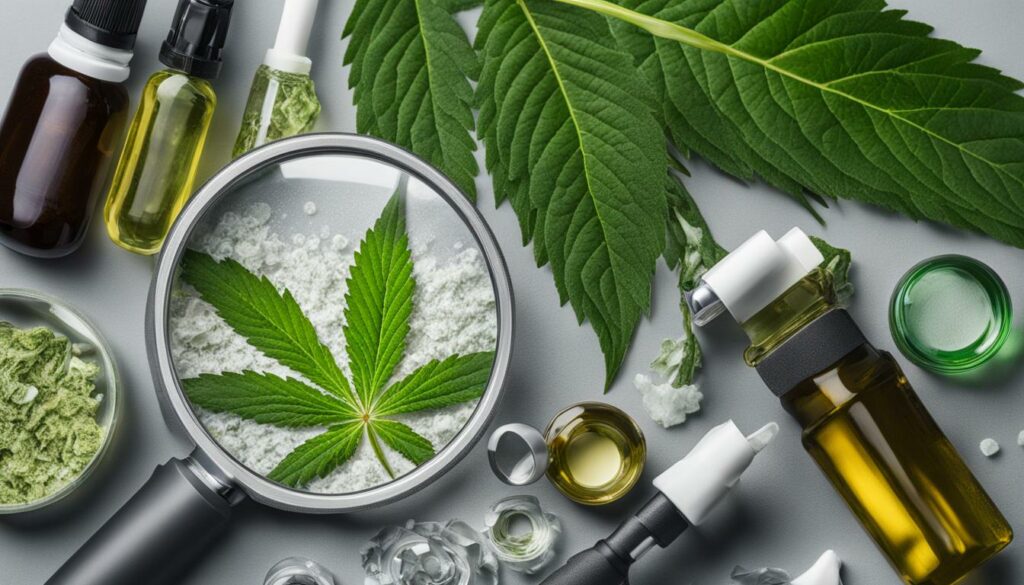
Summary:
- Pathogen identification methods are crucial for effective disease management in cannabis plants.
- Morphological characteristics help provide preliminary identifications but may not be definitive.
- Molecular methods like PCR and NGS offer accurate and comprehensive pathogen identifications.
- Accurate identification enables targeted control measures, reducing environmental impact and crop losses.
| Morphological Characteristics | Molecular Methods: PCR and NGS | Advantages |
|---|---|---|
| Physical appearance analysis | Detection of unique DNA sequences | Targeted control measures |
| May provide preliminary identifications | Accurate identification of known and unknown pathogens | Reduced environmental impact |
| Not always definitive | Comprehensive analysis of multiple DNA sequences | Early intervention |
Control Measures for Cannabis Diseases
Implementing effective control measures is crucial in preventing and managing diseases in cannabis plants. By disrupting the disease cycle and employing various preventive strategies, cultivators can safeguard their crops and ensure healthier, more productive plants. Control measures encompass a range of practices, including sanitation, biocontrol, chemical control, and environmental control.
Prevention and Sanitation: Practicing good sanitation is the foundation of disease prevention. By maintaining a clean growing environment, regularly sterilizing equipment, and adhering to hygiene protocols, cultivators can minimize the risk of disease spread. Sanitation measures include cleaning and sanitizing tools, equipment, growing rooms, and air filtration systems. This helps remove potential sources of contamination and reduce the presence of pathogens in the cultivation facility.
Biocontrol and Chemical Control: Biocontrol involves using beneficial organisms to suppress or control plant pathogens. This can include the introduction of predatory insects, such as ladybugs, that feed on pests that may transmit diseases. Additionally, the use of biofungicides, derived from naturally occurring microorganisms, can help inhibit the growth and spread of pathogens. When necessary, chemical control measures, such as the targeted use of approved fungicides or bactericides, can be employed to manage disease outbreaks.
Environmental Control: Creating an optimal growing environment is essential for disease prevention. This involves controlling factors such as temperature, humidity, and airflow to minimize conditions conducive to disease development. By implementing proper ventilation, temperature regulation, and humidity control, cultivators can reduce the risk of diseases such as powdery mildew and botrytis.
“Effective disease control in cannabis cultivation requires a comprehensive and integrated approach that addresses sanitation, prevention, and environmental variables. By implementing a combination of practices like sanitation, biocontrol, chemical control, and environmental control, cultivators can significantly minimize the risk of disease outbreaks and maintain healthier, more resilient plant populations.”
Implementing control measures for cannabis diseases is essential for sustaining a successful cultivation operation. By adopting preventive practices and adhering to rigorous sanitation protocols, cultivators can minimize the introduction and spread of pathogens. Incorporating biocontrol methods and, when necessary, targeted chemical control measures further enhances disease management strategies. Additionally, creating an optimized growing environment through environmental control measures helps create conditions that promote plant health and reduce disease susceptibility. By implementing these control measures, cultivators can safeguard their crops, protect their investment, and achieve higher yields of top-quality cannabis plants.
Tissue Culture for Disease-Free Cannabis Plants
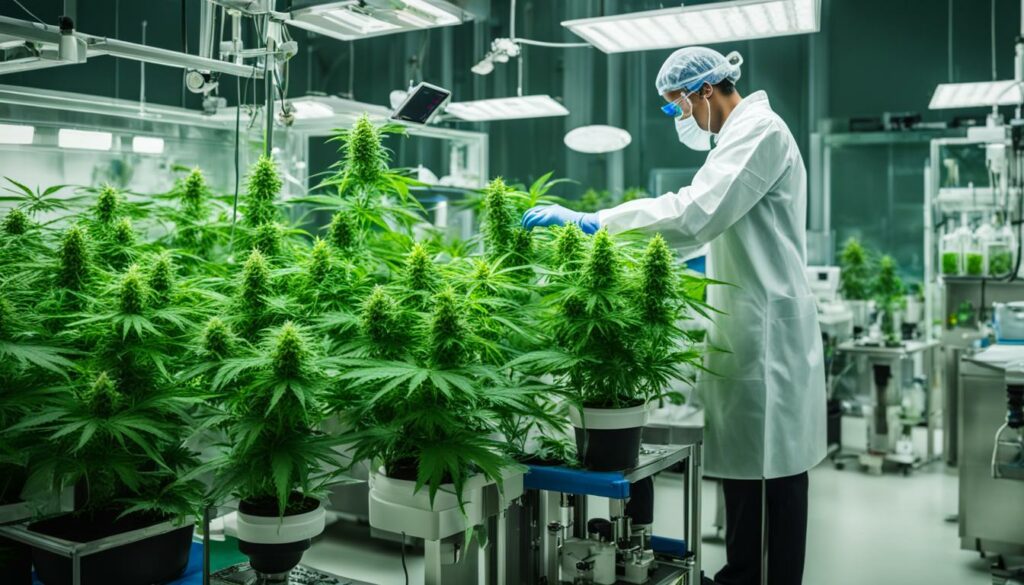
Tissue culture is a revolutionary technique used in the production of disease-free cannabis plants. It involves the growth and development of plant cells, tissues, and organs in a sterile, controlled environment. By starting with healthy and disease-free plant material, tissue culture procedures ensure the production of genetically uniform and robust cannabis plants.
Tissue culture relies on plant cell technology, where small pieces of plant material, called explants, are taken and placed in a growth medium containing essential nutrients and plant hormones. Under carefully controlled conditions, these explants develop into new plants, which can be further multiplied through subculturing. This process not only allows for the production of large quantities of disease-free plants but also maintains their genetic uniformity.
One of the significant advantages of tissue culture is the ability to screen plants for pathogens before they are introduced into commercial production. Through pathogen testing, tissue-cultured plants can be verified as free from diseases, ensuring the production of disease-free crops. This proactive approach helps prevent the introduction and spread of pathogens, safeguarding the health and productivity of cannabis plants.
The Benefits of Tissue Culture for Cannabis Cultivation
Tissue culture offers several benefits for cannabis cultivation:
- Disease-Free Plants: Tissue culture procedures eliminate pathogens, providing growers with disease-free plant material that can significantly reduce the risk of disease outbreaks.
- Genetic Uniformity: Tissue culture maintains genetic uniformity among the produced plants, ensuring consistent plant characteristics, such as growth rate, yield potential, and cannabinoid profiles.
- Mass Production: Through subculturing and multiplication, tissue culture allows for large-scale production of plants with excellent quality and uniformity.
- Rapid Propagation: Tissue culture accelerates the propagation process compared to traditional methods, enabling faster turnaround times and increased productivity.
Tissue culture procedures have transformed the cannabis industry by providing a reliable and efficient method for producing disease-free plants and maintaining genetic uniformity. This technique offers cultivators the opportunity to safeguard their crops against diseases and achieve higher yields of healthy, high-quality cannabis.
Table: Comparison of Tissue Culture and Conventional Propagation Methods
| Aspect | Tissue Culture | Conventional Propagation |
|---|---|---|
| Disease Control | Produces disease-free plants | Risk of disease transmission |
| Genetic Uniformity | Ensures genetic uniformity | Natural variation |
| Propagation Rate | Fast and efficient | Slower propagation process |
| Yield Potential | Consistent high yields | Variability in yield |
Related Articles
- How to Identify and Treat Common Cannabis Plant Diseases?
- What Are the Preventative Measures for Cannabis Plant Diseases?
- How Do Environmental Conditions Contribute to Cannabis Diseases?
- What Are the Organic Solutions for Cannabis Plant Diseases?
- How to Manage Disease Outbreaks in Large Scale Cannabis Grows?
Conclusion
Protecting cannabis plants from diseases is essential for a successful harvest. By implementing preventive measures, maintaining a clean growing environment, using disease-resistant cultivars, and ensuring disease-free planting stock, cultivators can minimize the risk of disease outbreaks and ensure healthier, more productive cannabis plants. Disease management requires ongoing monitoring, early detection, and prompt action to remove infected plants. With proper care and disease prevention strategies, cultivators can foster thriving cannabis plants and achieve a more fruitful harvest.
In summary, preventing and treating cannabis plant diseases is a critical aspect of disease management. By maintaining a clean and sanitary environment, controlling humidity and air temperature, treating irrigation water, identifying and removing diseased plants, using disease-resistant cultivars, and ensuring disease-free planting stock, cultivators can significantly reduce the risk of diseases. Early detection and prompt action are crucial in preventing disease spread, and regular monitoring is essential for effective disease management. By following these strategies and staying vigilant, cultivators can protect their cannabis plants and maximize their yields.
To achieve successful disease management, cultivators should adopt a proactive approach and prioritize preventative measures. Prevention includes maintaining a clean and sanitary environment, controlling humidity and temperature, and treating irrigation water. Additionally, it is crucial to identify and remove diseased plants promptly and utilize disease-resistant cultivars. By implementing these strategies and maintaining ongoing monitoring, cultivators can effectively manage diseases and ensure the health and productivity of their cannabis plants. Disease management requires dedication and vigilance, but the rewards are bountiful harvests of high-quality cannabis.
FAQ
What are some common diseases that can affect cannabis plants?
Common diseases that can affect cannabis plants include Fusarium, Pythium, Powdery Mildew, Botrytis, and Hop Latent Viroid (HLVd).
How can I prevent the spread of diseases in my cannabis plants?
To prevent the spread of diseases, it is important to maintain a clean and sanitary environment, control humidity and air temperature, treat irrigation water, identify and remove diseased plants, use disease-resistant cultivars, and ensure the use of disease-free planting stock or cuttings.
What measures should I take to maintain a clean and sanitary environment?
Regularly clean and sanitize tools, equipment, dehumidifiers, air filters, growing and trimming rooms. Visitors and staff should follow hygiene protocols, such as using footbaths, wearing hairnets, beard nets, gloves, and Tyvek coveralls. Air filtration and purification systems, such as HEPA filters and UV, can also be used to reduce airborne contaminants and pathogens.
How can I control humidity and air temperature to prevent diseases?
Monitoring and controlling humidity and air temperature levels, especially in the flowering room, can help prevent the spread of diseases like powdery mildew and botrytis. Proper monitoring and control can reduce the severity of infections as buds mature.
What should I do to treat irrigation water and prevent infections?
Treating irrigation water with UV, chlorine, or other registered products can help prevent the spread of pathogens like pythium and fusarium, which can cause root rot and other diseases in cannabis plants. Ensuring the quality and cleanliness of irrigation water is crucial for disease prevention.
How can I identify and remove diseased plants from my facility?
Using DNA-based testing tools, like PathoSEEK detection assays, can help screen plants for pathogens before they show visual symptoms or verify a suspected infection. Early detection and removal of diseased plants are key strategies for disease management.
Are there disease-resistant cultivars available for cannabis plants?
Yes, certain cannabis cultivars have shown resistance to diseases like powdery mildew. Genomic data analysis has revealed specific genes associated with powdery mildew resistance, which can be used in breeding for disease resistance.
How can I ensure disease-free planting stock or cuttings?
To prevent diseases from entering the growing facility, it is important to ensure that any plants entering, such as cuttings or planting stock, are disease-free. Quarantining and inspecting incoming plants for disease symptoms or the presence of insect pests can help prevent the introduction of diseases.
What are some common cannabis diseases and pathogens?
Common cannabis diseases include powdery mildew, leaf spot, root rot, crown rot, stem canker, and bud/flower molds. These diseases can be caused by pathogens like fungi, bacteria, viruses, and viroids.
How can pathogens be identified in cannabis plants?
Fungal and oomycete pathogens can be identified at the genus level based on morphological characteristics and then further identified at the species level using molecular methods like PCR. Bacterial pathogens can be identified using PCR methods that target specific regions of ribosomal RNA. Viruses and viroids can be identified through molecular analysis using RT-PCR and NGS techniques.
What control measures can be implemented for cannabis diseases?
Control measures for cannabis diseases include preventing the introduction of inoculum, monitoring and early detection, removing diseased plants, using biocontrol agents or biofungicides, using chemical-based products when necessary, and implementing environmental control measures.
What is tissue culture and how can it produce disease-free cannabis plants?
Tissue culture is a technique that involves starting with healthy and disease-free plant material, surface sterilization, in vitro culture, isolation, regular monitoring, subculturing, and genetic uniformity. Tissue-cultured plants can be tested for pathogens before being introduced into commercial production, ensuring their disease-free status.
Source Links
- https://www.plantcelltechnology.com/blog/diseases-affecting-cannabis-propagation-and-prevention-solution/
- https://medicinalgenomics.com/six-ways-to-prevent-disease-in-cannabis-plants-2/
- https://agri.nv.gov/uploadedFiles/agrinvgov/Content/Plant/Plant_Pathology/Hemp and Cannabis Crop Diseases -A guide to field diagnosis and management.pdf




